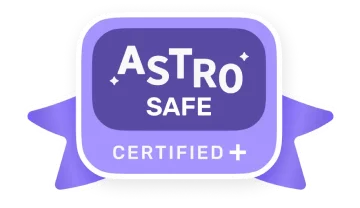Table of Contents
Why Kids Like “Would You Rather”
What the Game Teaches
How to Make It More Fun
Theme Nights
Storytelling Mode
Draw or Act It Out
Voting Rounds
Online Play
Tips for Hosting Group Play
Extend the Game into Learning
In Classrooms
For Language Skills
In Counseling or SEL Work
Let Kids Lead
Popular Question Categories
Why the Game Works
14th April 2025
Ultimate Guide to Fun and Engaging 'Would You Rather' Activities for Kids
Discover fun and engaging “Would You Rather” activities for kids that boost imagination, communication, and learning—perfect for classrooms, home, or group play. Includes creative prompts and hosting tips.
DIY Team
Keeping kids entertained can be tough—especially on rainy days or during long breaks. “Would You Rather” is a simple game that works almost anywhere. It’s quick to set up, easy to play, and always gets kids thinking and laughing.
This guide explains how the game works, why it helps, and how to make it even better.
Why Kids Like “Would You Rather”
Kids enjoy questions that let them imagine silly or surprising situations. The game asks them to choose between two things—often both strange or funny. It helps them think out loud and share ideas in a low-pressure way.
What the Game Teaches
It’s more than a fun way to pass the time. “Would You Rather” also supports child development:
A 2024 report from the National Child Development Institute found that kids who regularly played group-based logic games improved language skills by 25% over the school year.
“Games like ‘Would You Rather’ give kids a safe, fun way to express feelings, opinions, and preferences.” — Dr. Lina Matthews, Child Therapist
How to Make It More Fun
You can play this game anytime, anywhere. But here are a few ways to make it even better:
Theme Nights
Pick a theme—space, animals, holidays, or food. Kids can dress up to match. If it’s an animal theme, maybe they wear ears or draw whiskers on their faces.
Storytelling Mode
Ask kids to explain their answers. If they choose to fly instead of being invisible, ask why. Let them make up a little story. This builds language and narrative skills.
Draw or Act It Out
Instead of just saying an answer, have kids draw it. Or act it out. Drawing boosts visual thinking. Acting builds confidence and public speaking.
Voting Rounds
After each round, let the group vote on the funniest or most creative answer. You can keep score and award small prizes. It adds fun without too much pressure.
Online Play
If you prefer digital games, try the Would You Rather page on DIY.org. It has ready-made questions for solo or group use.
Tips for Hosting Group Play
Extend the Game into Learning
In Classrooms
Use “Would You Rather” as a warm-up or brain break. Tie questions into topics:
For Language Skills
Let kids write their own questions. They’ll practice sentence structure, grammar, and vocabulary.
In Counseling or SEL Work
Use emotional questions to start conversations:
Let Kids Lead
Give kids the tools to make their own “Would You Rather” deck. Use index cards or a notebook. Keep a decorated question jar. Let them collect ideas and trade questions with friends.
This gives them ownership and makes the game last longer.
Popular Question Categories
These topics are usually a hit:
Why the Game Works
No setup. No materials. No pressure. You can play anywhere—on a car ride, at dinner, or in the classroom.
It makes kids feel heard. They get to laugh, think, and express ideas. And adults learn more about how they think.
“Would You Rather” is more than a game. It’s a way to help kids speak, think, and connect. You don’t need anything to get started—just a question and a little imagination.
Try it at home, in class, or anywhere kids gather. It always gets people smiling—and that’s worth a lot.
Our Mission
To create a safe space for kid creators worldwide!
